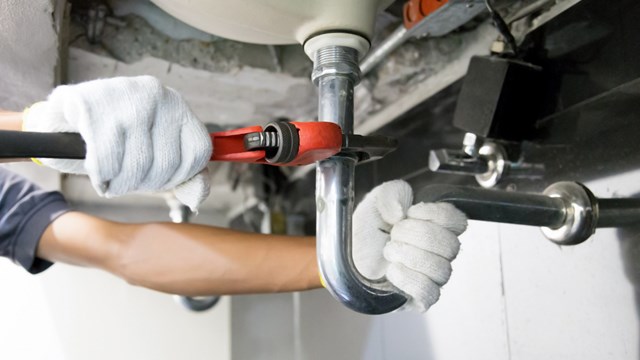The Cooperator’s Co-op and Condo Expo included a standing room only crowd at a seminar on new fire safety regulations. A panel of experts explained the law and provided information on everything from who is ultimately responsible for posting fire safety notices in individual units to how buildings have used the installation of sprinkler systems to lead to profit. Why such an interest? The deadline for the law taking effect was extended to January 31. Two months later, boards scurry to make sure they’re in compliance. Make sure you’re in the know.
Preventable Disasters
Julian Bazel, counsel to the New York City Fire Department, explains that 1999’s Local Law 10 was propelled into being by two disastrous fires that occurred within weeks of each other the previous year. "What these incidents revealed," says Bazel, "is that there was a lot of public confusion about what to do in the event of fire in one’s apartment or building."
The first fire was started in the top floor of a ten-story building in Brooklyn by a tenant smoking in her bed. There was no prompt call to 911, and by the time fire fighters arrived, fire had flashed over into the hall. Three firefighters were killed. The residence had a sprinkler system in the hallway, but the main valve had been turned off and it did not activate.
The second, known as the McCauley Culkin fire because it started in his family’s apartment, occurred in a 51-story high-rise. The apartment occupants got out, but they left a door open. Smoke quickly circulated. Four people attempting to exit the building via the stairwells died of smoke inhalation because the stairwell door was also open.
People who survived the fire had tales of terror. Describing the testimony one tenant provided city council, Bazel says, "They were 20 floors above the fire. However, they saw smoke coming from below them, and they did what they always understood they were supposed to do: They went to the stairwell. It was, however, filled with smoke, and when they realized they could not get down, they attempted to return to the apartment. Then the tenant realized she had left her keys in the apartment and the door had closed behind her and locked. This was a windowless hallway: there was no way out, the stairwells were full of smoke, the hall was filling up with smoke, they couldn’t see, they couldn’t breathe. Fortunately, a neighbor heard them and let them into her apartment, where they retreated to the balcony and taped up the balcony doors to keep smoke from coming out."
Explaining the fire safety law, Bazel says, "The most important provision is the requirement that all newly constructed and substantially renovated apartment buildings with four or more dwelling units install automatic fire sprinklers throughout the building. The law also specifies requirements for maintenance and inspection of sprinkler systems."
There are also fire safety plans and notice requirements. "The law requires the owner of each building to distribute a fire safety plan with fire safety information and evacuation instructions annually. Fire safety notices must also be posted in the inside of the main entrance door of each apartment and by the mailboxes in the lobby, or if there are not maiboxes, by the elevator or stairs." (Forms for both can be obtained at www.nyc.gov.)
New View on Sprinkler Systems
Peter Varsalona, a principal with Rand Engineering in New York City, says that sprinklers are the most effective means of fire protection and that their use comes out of a changing philosophy of recent years. In the past people relied on the fireproof construction of their buildings, a passive measure whereby the separations between apartments were designed to contain fires. However, as seen in the McCauley Culkin fire, the existence of doors puts a major crack in that system, and makes sprinkler systems–an active solution–highly desirable.
If you’re going to have to substantially renovate or convert your building, and you’re worried about the cost of the sprinklers, Varsalona points out that installing sprinkler systems can afford buildings the opportunity to build additional stories. "Decide if it is worthwhile for you to invest in this from a real estate point of view by expanding the building," he says. Robert Grant, director of Midboro Management in Manhattan, describes a co-op that realized bringing in sprinkler service would allow them to construct another one to two stories on their roof. "They’re now planning to create duplexes and triplexes, and will sell the shares at a cost probably double what the new fire service is going to cost them. After they sell, they’re going to be collecting some pretty substantial monthly maintenance for the rest of their existence as a co-op. And believe me, this is a property that had only one goal: to improve fire safety."
Sprinkler system maintenance is clearly spelled out in the law. "It has to be done by a competent person with a certificate of fitness, something most superintenants have," Varsalona says. "They have to inspect the entire system once a month to make sure that it’s in perfect working order. If the building is less than six stories or 75 feet high and has two means of egress, you can do that inspection once every six months.
You are also now required to have six extra sprinkler heads on the premises to replace any damaged heads that may be discovered. You’re also required to do a flow test every 30 months. The test has to be done by a master plumber, someone with a fire suppression license, and the records for that inspection have to be kept for a period of five years. Furthermore, a hydrostatic pressure test is required by the fire department every five years, and has to be completed in the presence of a fire department representative. The agent or owner has to keep records of the inspections or any violations pertaining to the sprinkler system and they have to be made available to all the building occupants during normal business hours."
Fire Safety Plans
"The building owner is required to do the following things," says Bazel, "First, complete a building information sheet (the Fire Safety Plan) that describes the construction of the building and its fire safety systems, and sets forth all the means of egress from the building; second, distribute fire preparedness and evacuation instructions to the building occupants and building service employees. The third thing is to post fire-safety notices on the locations indicated." There are two versions, depending on whether your building construction is non-combustible or combustible. "The difference between the two," says Bazel, "is whether the fire department is advising you to remain in your apartment or to exit your apartment in the event of a fire that’s not directly jeopardizing you. In noncombustible buildings where the building structure is not an immediate danger, the fire safety notice advises the occupants to remain in the apartment, call 911, seal up any openings where smoke may enter. The fire department is normally on the scene within a number of minutes and in such cases it’s usually safer to remain in the apartment rather than venture out into smoke-filled hallways and stairwells. In combustible buildings where fire can spread through the walls and floors, the notice advises occupants to evacuate the building if they can do so safely."
Bazel says that the co-op board or condo association must prepare the notice and distribute it to each building occupant with instructions as to where to affix it, along with any hardware that may be needed. However, in co-ops and condos only, the burden is on the residents, given that they are shareholders or unit owners, to actually post the notice.
Main Causes of Fire and Death
Beyond what is covered by Local Law 10, there are some important things to know about protecting your building. Robert E. Mackoul of Mackoul & Associates in Long Beach, New York, one of the largest insurers of co-ops and condos in the metropolitan area, says that the number one cause of fires is electric. "Those buildings that have fuses are more apt to have compromised electric. When a fuse blows in someone’s apartment, if they don’t have the proper type of fuse, they may put in any type of fuse. Ultimately, the wires in the walls are going to get compromised. It is worth the money investing in upgrading your electric." Grant adds, "A very substantial tax credit is offered by the city of New York if one upgrades the electric wiring through the property."
Mackoul says that it’s not the fire that kills, it’s most often smoke. For that reason, fire detection is very important. Even if money is a big concern, Mackoul points out that battery-operated smoke detectors are cheap–$5 or $6. "Maybe they won’t tell the fire department where the fire is, but what they will do is give the residents in the building hopefully enough time to make an exit."
Emergency lighting is also important. "When’s there’s a fire," says Mackoul, "the fire department cuts the electric power to the building, which means that there’s no lights. So if you can imagine people on higher floors who are frightened; there’s smoke all over and the building is black. People panic." He also provides a financial perspective: "If you take the steps to improve your building’s fire protection, you’ll wind up finding that over the years you’ll benefit by lower premiums from your insurance company which will ultimately pay for the cost of the upgrades.
Beyond Compliance
The extent of know-how and equipment available today to prevent fire deaths and property loss is impressive. Although it seems obvious to make the point that fire safety is more than a worthwhile goal, its cost and the perception that the chances of having a bad fire in one’s own building are slim, have prevented buildings from doing all they could. And while the law mandates important steps, it doesn’t, for example, mandate sprinklers in existing buildings–and not because it isn’t a good idea. A board can be committed to fire safety and sound fiduciary management at the same time. There are many ways to protect the lives of people without being financially irresponsible.
Ms. Goodman is a freelance writer living in Westchester.







6 Comments
Leave a Comment